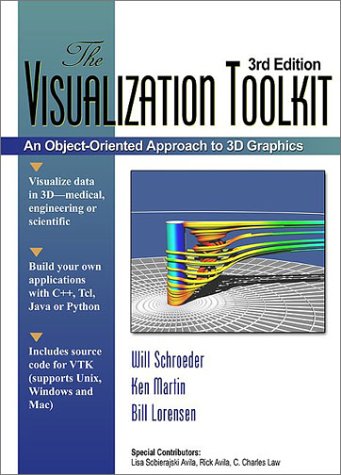 highly recommended
highly recommended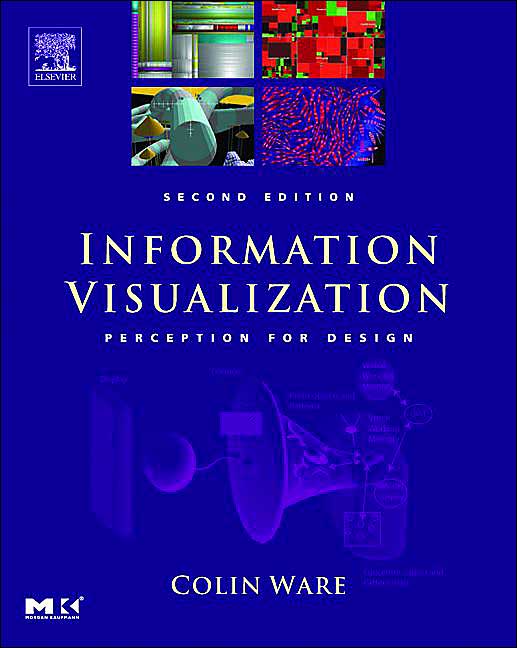 recommended
recommended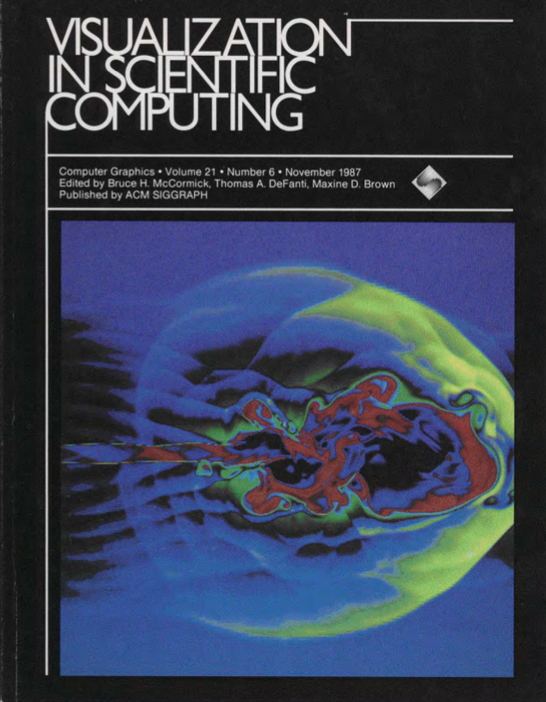
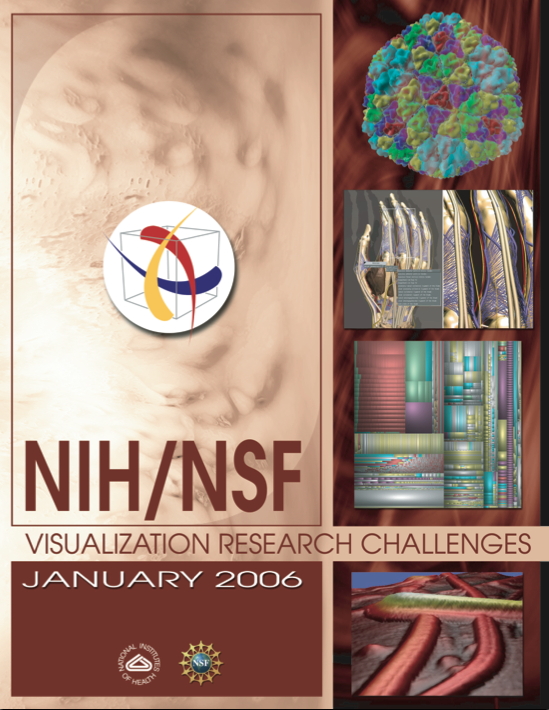
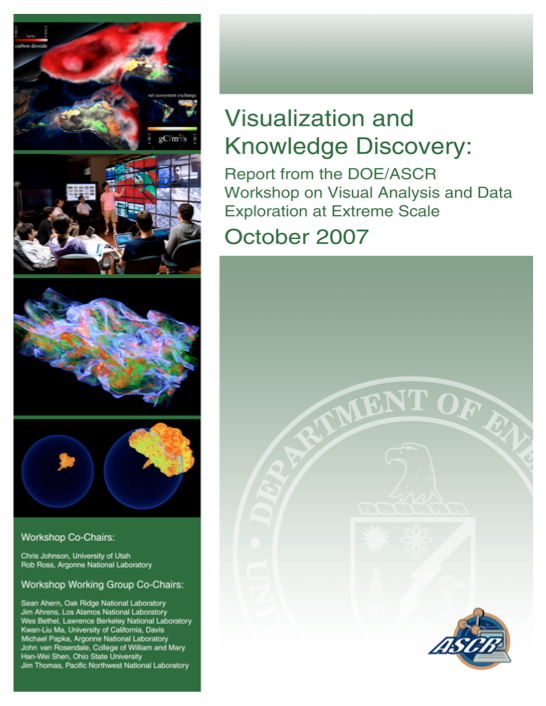
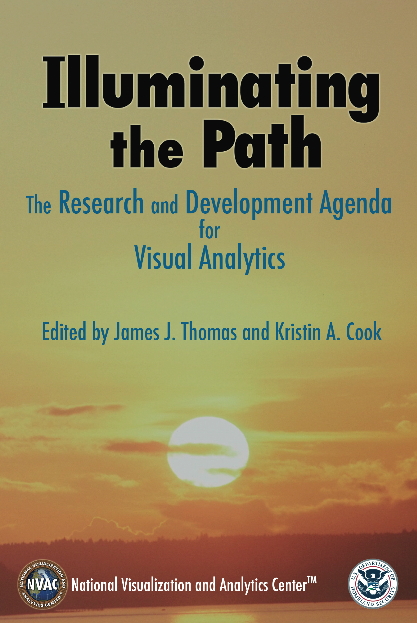
Electronic
Visualization
Laboratory
(EVL)
2032 Engineering Research Facility (ERF) and 918 SEO
EVL phone (312) 996-3002 email: aej at evl.uic.edu
EVL fax (312) 413-7585 WWW: www.evl.uic.edu/aej
office hours: Tuesday and Thursday from 4:45 to 6:00 in 2032 ERF, and by appointment
32362 Lecture - Tuesday / Thursday from 3:30 to 4:45pm in 2068 ERF
 highly recommended highly recommended |
|
 recommended recommended |
|
| The Visualization Toolkit: An Object Oriented Approach to 3D Graphics, 4th Ed by Schroeder, Martin, and Lorens | Information Visualization: Perception for Design, 2nd ed by Colin War | ||
| and
also
the
following
reports
... |
|||
 |
 |
 |
 |
| Visualization
in
Scientific
Computing
-
1987 |
NIH/NSF
Visualization
Research
Challenges
-
2006 |
Visualization
and
Knowledge
Discovery
-
2007 |
Illuminating
the
Path
-
The
Research
and
Development Agenda for Visual Analytics -
2008 |
and
you may also want to take a look at Edward Tufte's four books: Visual
Display of Quantitative Information, Envisioning Information,
Visual Explanations, and Beautiful Evidence
(may change depending on the number of
students in
the class)
| Day | Topic | Important Events |
| 1/11 1/13 | Visualization
Basics |
|
| 1/18 1/20 | The
Visualization Toolkit |
1/17 Project 1 out, 1/21 last day to add/drop |
| 1/25 1/27 |
Fundamental Algorithms | |
| 2/01 2/03 | Visualization reports from the 00s | |
| 2/08 2/10 | : Project 1 Review : | 2/07 Project 1
due / Project
2 out |
| 2/15 2/17 | SciViz at EVL & Demonstrations | 2/14 Short presentation topic chosen |
| 2/22 2/24 |
Short presentations | |
| 3/01 3/03 |
Short presentations | 2/28 Paper presentation topic chosen |
| 3/08 3/10 |
: Project 2 Review : | 3/07 Project 2
due |
| 3/15 3/17 |
: Project 2 Review : | 3/14 Project 3 proposal due |
| 3/22 3/24 |
-
- - -
- - - - - Spring Break - - - - - - - - - |
|
| 3/29 3/31 |
Paper Presentations | final exam out |
| 4/05 4/07 |
Paper Presentations | |
| 4/12 4/14 |
Final
Project Work Week |
|
| 4/19 4/21 |
: Project 3 Review : | 4/18
Project 3 due |
| 4/26 4/28 |
: Project 3 Review : | |
| Friday
5/6 |
Final
Exam Project Presentations |
1pm to 3pm |
""We have so much time and so little to do! No! Wait! Strike that! Reverse it!" -- Willy Wonka
You
should have passed CS 488 (Computer Graphics I) or CS 424
(Visualization and Visual Analytics I) to take CS
526. or have equivalent knowledge. CS 488 talks about how computer
graphics is done behind the
scenes; CS 424 talks about visualization and interation in 2D; this
course
concentrates on visualization and interaction 3D. Knowledge
of OpenGL is very useful but not required.
Standard departmental disclaimer: If you do not have the prerequisites for this course make sure that you drop this course right away. The department will verify the prerequisites for all students registered in this course during the first few weeks of the term and if you do not have the prerequisites, you will be notified and dropped from the course after the normal drop/add period. By that time, you will not be able to enroll in any new course.
From the course guide: State of the art in computer graphics and interactive techniques: three-dimensional surface and volumetric models. Each time the course is taught the focus is on different topics. This course is going to focus on scientific visualization (including information visualization and medical visualization.)
Attendance is very important, but not mandatory. Part of your grade will be based on your in-class participation (ie asking good questions, making good comments) so please take that into account.
I put all of my notes on the web, however these notes should not be considered 'official' until the day of class. If I make any major changes to a page afterwards, then I will announce it in class and note it at the bottom of each page. I try to ensure that the notes on the web accurately reflect the lecture, but its what is discussed in class 'that counts', not what's written in the notes.
"Those who are absent are always wrong." - African proverb
More on the presentations
More on the projects
"I hear and I forget. I see and I remember. I do and I understand" - Chinese proverb
There will be a final exam at the end of the term covering the material presented in class. This exam will most likely be a programming project, but may be a written exam.
The
final
grade will be calculated as follows
Letter
grades
45% -
Projects (15% each)
A:
87% -
100%
20% -
Paper
Presentation
B:
75% -
86%
10%
-
short
presentation
C:
62% -
74%
10% -
In-class
participation
D:
50% -
61%
15% -
Final
Exam
E:
00% -
49%
Note: that you must get a passing (D or better) grade on all projects and the final to get a passing grade in the course.
Also note: I only give Incompletes for serious hospitalization issues which come up suddenly near the end of the term.
Also
also
note: I have no qualms about giving Ds or Es in a graduate level
course, though the vast majority of the grades have tended to be As and
Bs. I also have no qualms about failing graduate students for cheating
- so be good.